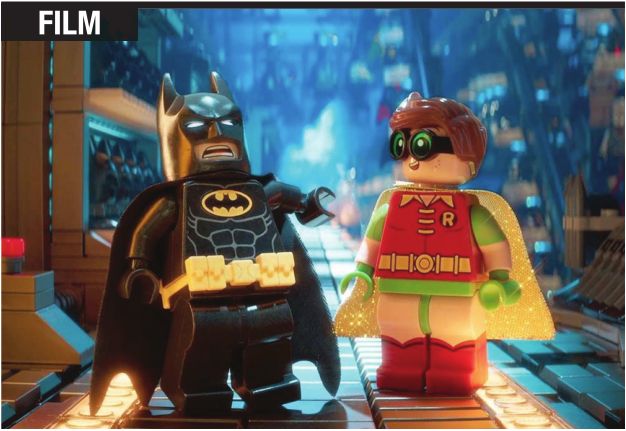
Call me a curmudgeon, but I was one of the few who weren’t fully enamored with The Lego Movie when it hit movie theaters in 2014. While it did have a clever plot and a worthwhile theme – that is, for a featurelength commercial – I found its manic pace and spastic visual style tiresome. In a similar vein, we now have The Lego Batman Movie springboarding off the concept from the first film that the Caped Crusader is actually a selfabsorbed egomaniac who doesn’t fight crime for the greater good but for the glory it brings him. Call me a nitpicker if you will, but this is not the Batman I ever knew, and while I could accept this as the throwaway joke it was in Lego, basing an entire movie on this simplistic concept reveals it to be the faulty premise it is.
From the very first frame, the selfreferential tone of the script rears its ugly head as Batman’s (Will Arnett) raspy voice is heard saying that all important films start with a dark screen before riffing on the Warner Brothers symbol that appears and anything else that strikes his fancy. This continues throughout most of the movie with comments being made on past incarnations of the character, the various villains he fights, and key moments in the Batman’s history. While I’m all for a post-modern approach, director Chris McKay beats this concept into the ground with the obvious, albeit clever comments wearing thin before the first half hour is over.
The idea is simple – Batman is a loner and he likes it. However, when he tells his arch-enemy the Joker (Zach Galifianakis) that going mano-a-mano with him means nothing and his faithful butler Alfred (Ralph Fiennes) points out that his greatest fear is being part of a family, the Dark Knight goes into major denial. However, once he lays eyes on new police commissioner Barbara Gordon (Rosario Dawson), he begins to think that spending nights alone in the Batcave might not be the best use of his time. When he’s fooled into adopting young orphan Dick Grayson (Michael Cera) and has to spend time with him, his outlook on his solitary life starts to change even more.
Much of the plot revolves around a united front of Gotham City’s villains, the banishing of the Joker to Superman’s Phantom Zone, and Batman’s new allies – Robin and Batgirl – trying to break down his barriers. As this plays out, a constant barrage of allusions bombard the audience with such speed that it will require two, perhaps three, viewings to catch them all. Credit must be given to McKay and his writers; they’ve obviously done their homework as second-tier villains rub shoulders with the Caped Crusader’s more famous foes, while the most obscure bad guys from the character’s Silver Age-era bounce about in the background. Equally impressive is sly citing of the various incarnations of the characters, with the serial from the 1940s being mentioned in the same breath as the 1966 television series and every big screen adventure. Batman aficionados will be well satisfied.
Despite many key pieces being in place, the film winds up being something to endure rather than enjoy. The manic action, whether it be a variety of blocks whirring about to create a much-needed device or an epic throwdown between heroes and villains, becomes a dervish of confusion; the images rapid-fire salvos aimed at those with attention deficits. There’s simply no visual clarity to be had, and for all of the trouble gone to in order to bring this distinctive, vibrant world to life, there isn’t a single moment of calm afforded us to simply sit back and drink it all in. But then again, I’m an odd bird – I prefer to appreciate art rather than be assailed by it.